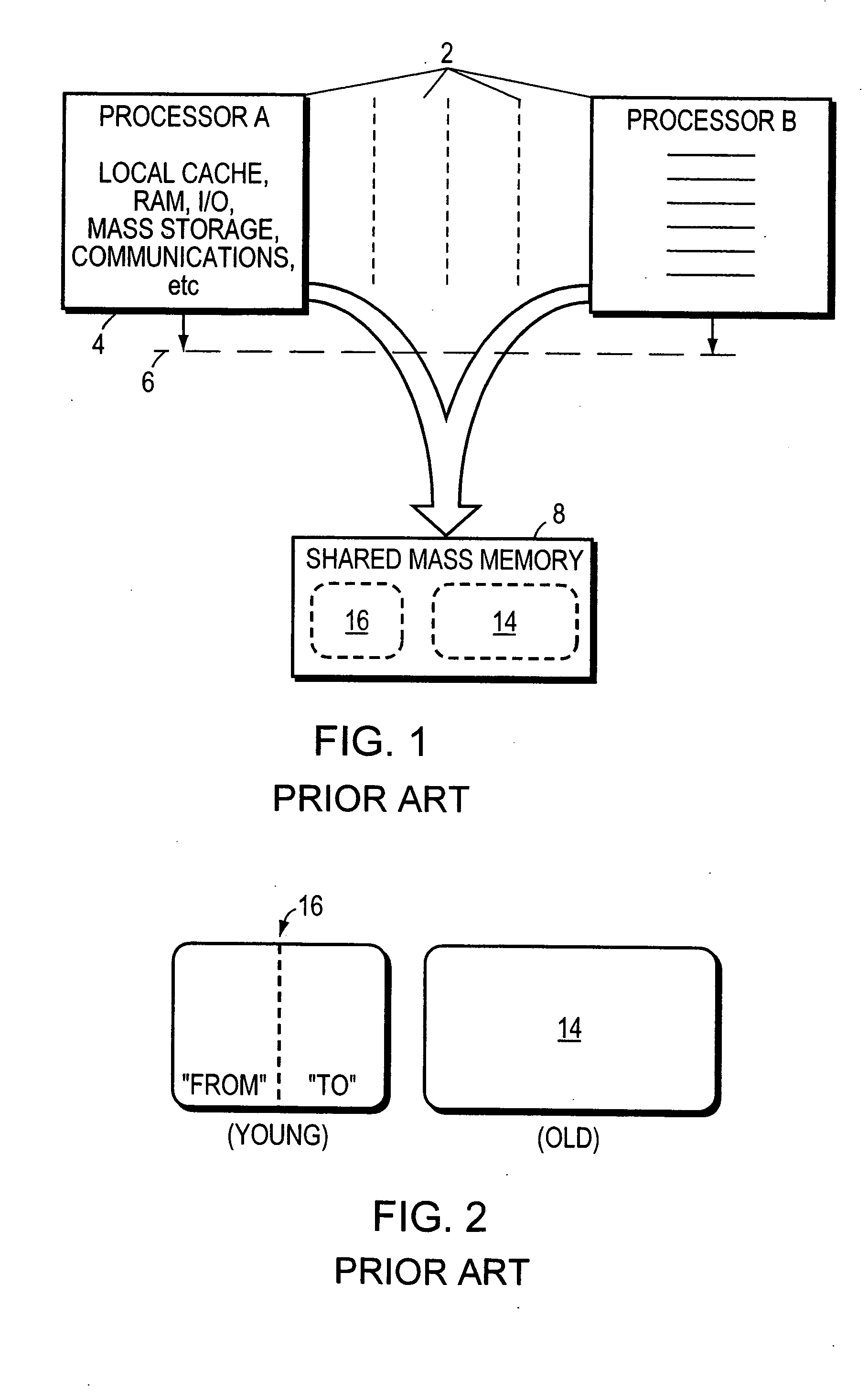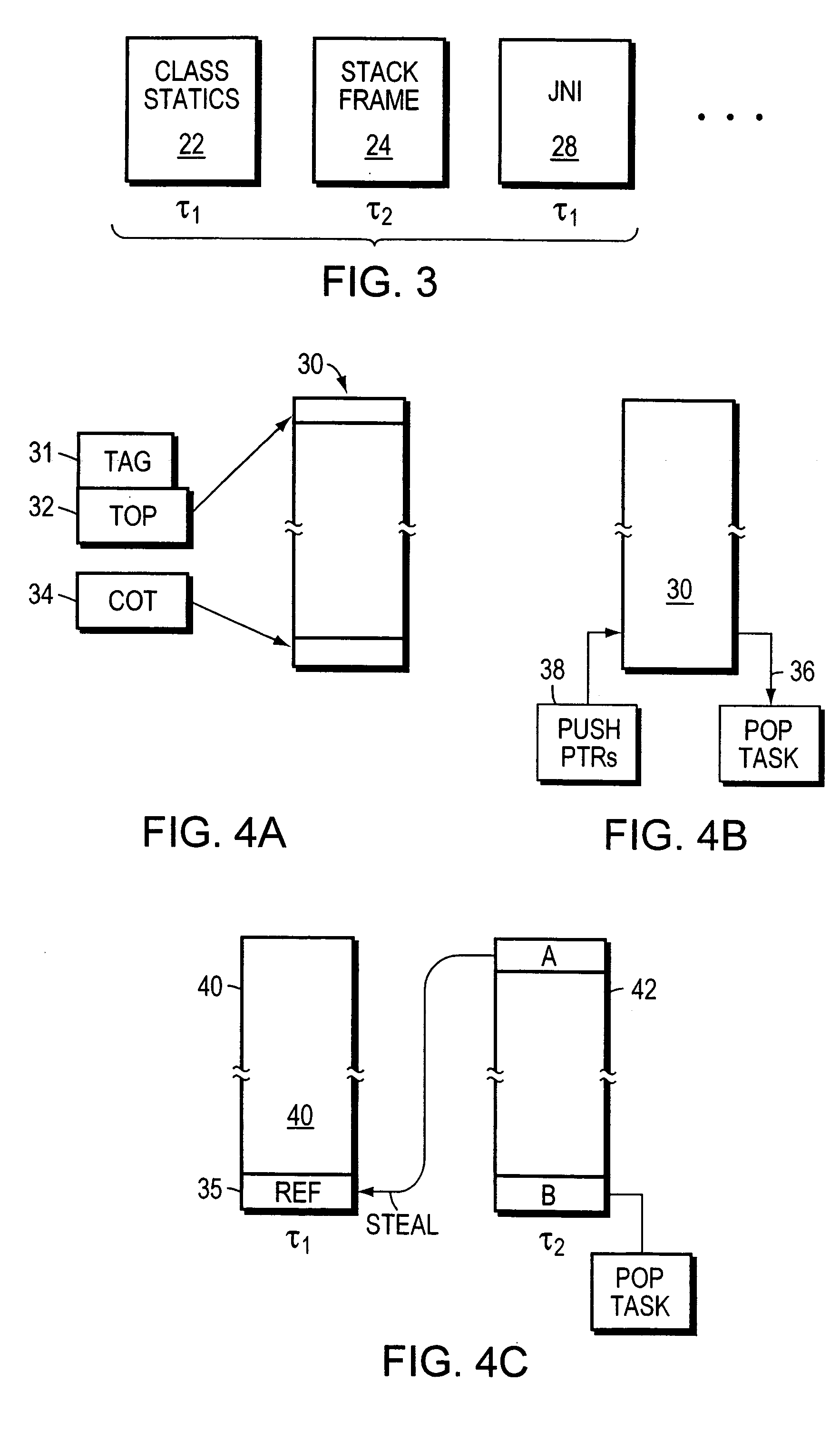Work stealing queues for parallel garbage collection
a work-stealing queue and garbage collection technology, applied in the field of memory management, can solve the problems of affecting the operation of the mutator, so as to reduce the interruption or blocking of the owner's operation.
- Summary
- Abstract
- Description
- Claims
- Application Information
AI Technical Summary
Benefits of technology
Problems solved by technology
Method used
Image
Examples
Embodiment Construction
[0036]FIG. 1 is a hardware block diagram of a multiprocessor computing system in which a number of processors 2 share common memory 8. Each processor may also have local RAM, cache, and mass storage, as well as communications and I / O devices. In addition there may be local communications paths 6 between the processors in the form of common busses, LAN's, or the like.
[0037]FIG. 1 depicts shared memory 8 as separate from memory disposed more locally to the individual processors, but this is not a necessary multiprocessor configuration. There may be a controller (not shown) for this shared memory in some embodiments. The operating system partitions the shared memory space into several sections, one being the “heap.” The heap is where space is allocated to objects dynamically under the control of a garbage collector. The heap itself is divided into two sections, referred to herein as the old generation 14 and the young generation 16. However, in other preferred embodiments, the heap ma...
PUM
 Login to View More
Login to View More Abstract
Description
Claims
Application Information
 Login to View More
Login to View More - R&D
- Intellectual Property
- Life Sciences
- Materials
- Tech Scout
- Unparalleled Data Quality
- Higher Quality Content
- 60% Fewer Hallucinations
Browse by: Latest US Patents, China's latest patents, Technical Efficacy Thesaurus, Application Domain, Technology Topic, Popular Technical Reports.
© 2025 PatSnap. All rights reserved.Legal|Privacy policy|Modern Slavery Act Transparency Statement|Sitemap|About US| Contact US: help@patsnap.com



